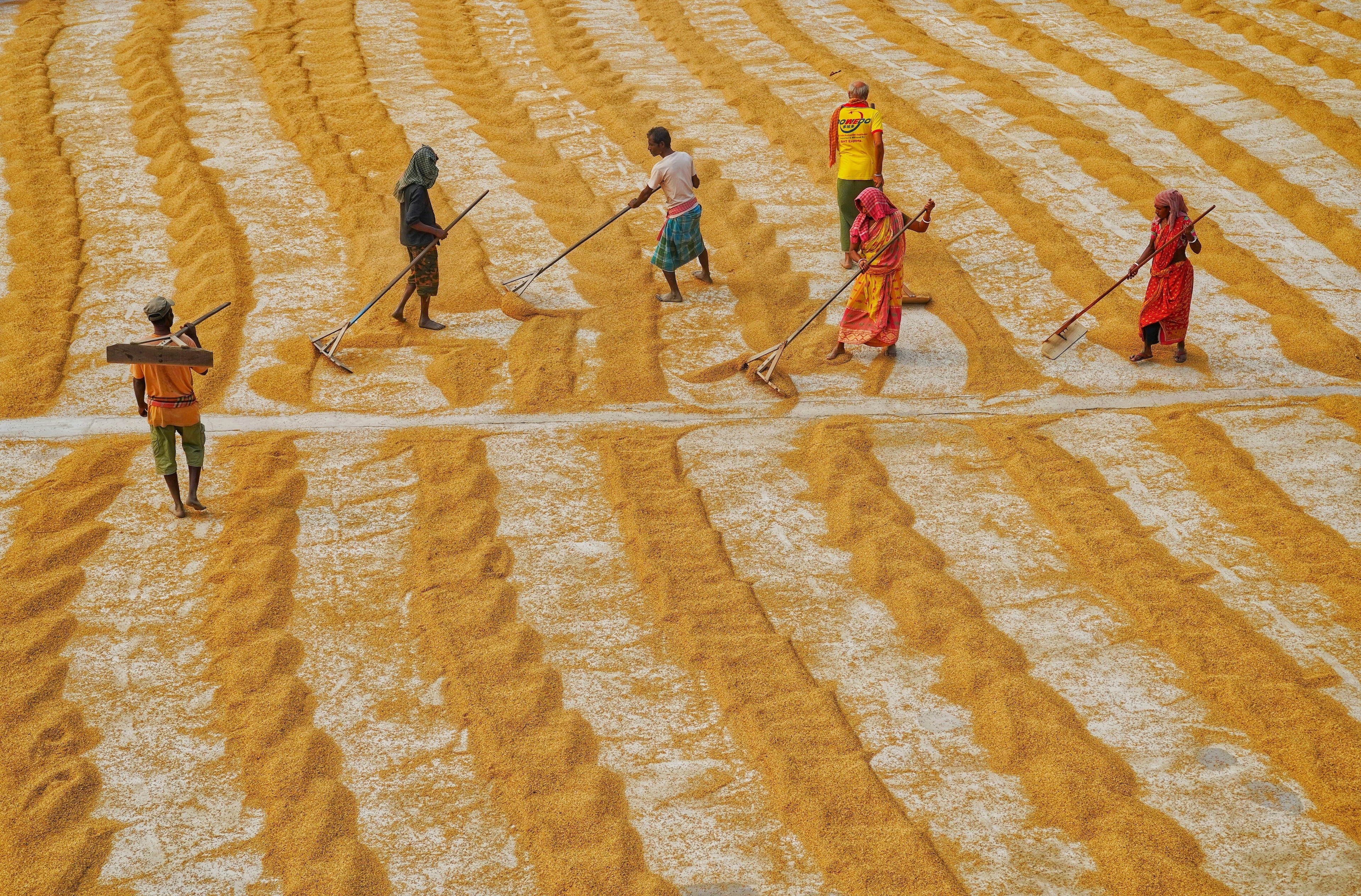This is the state of the climate in Africa - and why it urgently matters to us all

Drought in Africa caused by the climate crisis is contributing to food insecurity.
Image: REUTERS/Mike Hutchings
Stay up to date:
SDG 13: Climate Action
- Africa is warming faster than the rest of the world, according to the State of the Climate in Africa report, which identifies key trends and urgent action.
- The continent could lose all of its glaciers by the 2040s.
- Climate change is a key driver of food insecurity, poverty and displacement in Africa.
- Sub-Saharan Africa needs an estimated $30 to $50 billion each year for the next decade in climate adaptation costs.
Within the next 10 years, Mount Kenya could become one of the first major mountain ranges in the world to completely lose its glaciers through human-induced climate change.
This is one of the many dire warnings included in the second State of the Climate in Africa report, which finds Africa is warming faster than the global average.
The report provides a snapshot of climate change trends - including drought and floods - which are contributing to food insecurity, poverty and displacement across the continent, and outlines the critical action needed.
Accept our marketing cookies to access this content.
These cookies are currently disabled in your browser.
Africa's mountain glaciers are shrinking faster than the global average - and could mean total deglaciation by the 2040s, with Mount Kenya's glaciers disappearing a decade earlier.
Professor Petteri Taalas, Secretary-General of the World Meteorological Organization (WMO), which coordinated the report, says this rapid shrinking "signals the threat of imminent and irreversible change to the Earth system".
There's a very real human cost to the more variable climate, warns Josefa Leonel Correia Sacko, Commissioner for Rural Economy and Agriculture at the African Union Commission.
"By 2030, it is estimated that up to 118 million extremely poor people will be exposed to drought, floods and extreme heat in Africa, if adequate response measures are not put in place. This will place additional burdens on poverty alleviation efforts and significantly hamper growth in prosperity."
Here are some of the other key findings and some of the actions required:
Temperature and sea level rises
Last year was one of the warmest years on record for Africa, which has warmed faster than the global average temperature over land and ocean combined.
For the three decades between 1991 and 2020, the warming trend was higher than for the 1961-1990 period in all African sub-regions. It was significantly higher than the trend for 1931-1960, the report found.
Sea levels are rising at a faster pace than the global mean rate, along the tropical and South Atlantic coasts and Indian Ocean - at approximately 3.6mm and 4.1mm per year respectively.
Rainfall and flooding
There were big variations in rainfall patterns in 2020, with some areas having too much, which led to extensive flooding across parts of East Africa. Lakes and rivers, including Lake Victoria and the Blue Nile, reached record high levels.
At the same time, there wasn't enough rainfall in the northern coast of the Gulf of Guinea and in north-western Africa and along the south-eastern part of the continent, according to the report. A drought in Madagascar caused a humanitarian crisis.
What’s the World Economic Forum doing about climate change?
Food insecurity and displacement
The number of people affected by food insecurity rose by 40% in 2020 over with the previous year, driven by a the impacts of the pandemic, as well as climate change, conflicts and political instability.
Pest outbreaks were also a key driver of food insecurity, with the locust invasion continuing to have a major impact in East and the Horn of Africa in 2020.
This region also accounted for 12% of all new population displacements worldwide, with over 1.2 million new disaster-related displacements and almost 500,000 new conflict-related displacements.
"Floods and storms contributed the most to internal disaster-related displacement, followed by droughts," says the report.
Accept our marketing cookies to access this content.
These cookies are currently disabled in your browser.
Investment and adaptation
The report also made key recommendations for urgent investment in adaptation needed to deal with the climate crisis.
Sub-Saharan Africa needs an estimated $30 to $50 billion each year for the next decade to "avoid even higher costs of additional disaster relief".
Hydro-meteorological infrastructure to measure weather and climate variability and early warning systems are vital to prepare for high-impact weather events that are growing in scale and frequency.
Surveys have found giving households access to information on food prices and weather, which helps farmers know when to plant, can reduce the chance of food insecurity by 30 percentage points.
The report recommends following the African Union Green Recovery Action Plan, launched in July, to "facilitate the achievement of the continent’s sustainable and green recovery from the pandemic while also enabling effective climate action".
Don't miss any update on this topic
Create a free account and access your personalized content collection with our latest publications and analyses.
License and Republishing
World Economic Forum articles may be republished in accordance with the Creative Commons Attribution-NonCommercial-NoDerivatives 4.0 International Public License, and in accordance with our Terms of Use.
The views expressed in this article are those of the author alone and not the World Economic Forum.
Related topics:
Forum Stories newsletter
Bringing you weekly curated insights and analysis on the global issues that matter.
More on Climate ActionSee all
Michael Fröbel and Stanislas Hillen
August 8, 2025
Elizabeth Henderson and Daniel Murphy
August 8, 2025
De Rui Wong and Keebum Kim
August 7, 2025
Aurora Matteini and Derek Baraldi
August 6, 2025
Tom Crowfoot
August 5, 2025
Sverre Alvik
August 5, 2025







